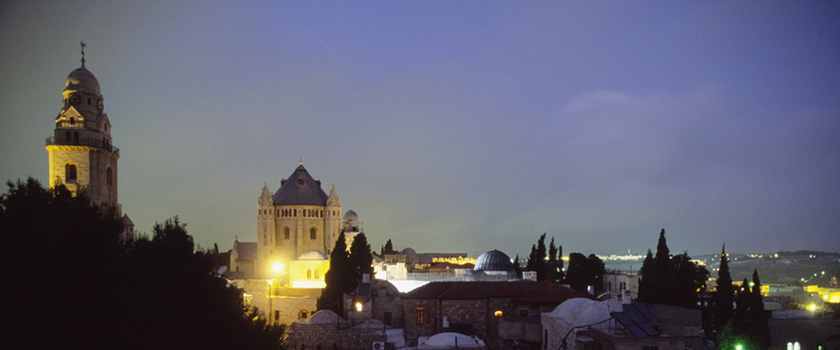Dormition Abbey and the Tabgha Priory
 Dormition Abbey on Mount Zion (© by Frieder Blickle).
Dormition Abbey on Mount Zion (© by Frieder Blickle).
German speaking monks have lived on Mt. Zion since 1906, in the immediate vicinity of the Room of the Last Supper. They were sent there on the initiative of the emperor Wilhelm II and came from different Benedictine monasteries of the Beuron congregation. In 1898, Wilhelm II gave to the German Association of the Holy Land a plot of land on the edge of the Old City. On that site a shelter was to be built for German Catholic pilgrims.
The Dormition Church was dedicated in 1910, and in 1926 the monastery was raised to the status of an abbey under the name Beatae Mariae Virginis. Apart from the actual patronal feast of the “Assumption,” other central mysteries of the New Testament have a great significance for the life and worship of the Benedictines on Mt. Zion: the “Last Supper” with the institution of the Eucharist and foot-washing, the appearance of the Risen One in the midst of his disciples on Easter day, the sending of the Holy Spirit on Pentecost, and the life of the Early Church.
Since 1939, monks of our community have also cared for the sanctuary of the Multiplication of Loaves and Fishes at Tabgha on the Sea of Galilee. There, in 1982, a new church was dedicated, built over valuable Byzantine mosaics, among them the world renowned mosaic of two fish and a bread basket. They recall the miracle of the Multiplication of Loaves and Fishes, one of the best known miracles Jesus performed in the Galilee.
We are a Benedictine community living in two places: at the abbey in Jerusalem and at our priory in Tabgha. We live as monks according to the Rule of St. Benedict and under the direction of our abbot. The Benedictine Rule helps us to live under the guidance of the Gospels. The fact that we are allowed to lead this life in a rhythm of prayer and work in two places of great biblical significance allows for a special dynamic among our monks.
Since the beginning and according to its orientation, our community is a German-speaking community, that is, we celebrate our worship services in German. However, in all the generations of monks, there has always been a colorful mixture of brothers from various countries and languages. Thus, our small family of monks is an image of the church on its pilgrimage: strangers, guests in a foreign land, together on the way towards God.
The focus of our service and work, besides the celebration of the liturgy and the service to our pilgrims in both places, is especially ecumenical and interreligious dialogue, theological studies, and teaching. At Tabgha, we maintain and take care of an international encounter center for youth and for disabled people.